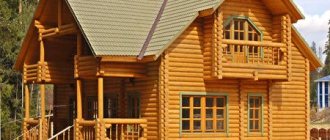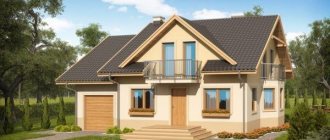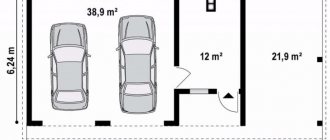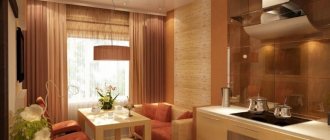Russia has always been famous for houses made of wood. There are many examples of wooden architecture made by famous masters. There are beautiful log huts, attracting with their splendor and solidity. Picturesque roofs with unique sholoms in the shape of a horse's head, carved piers, window frames, shutters, pillars of galleries and porches delight the eye.
finishing the ceiling and walls with wooden panels is a popular solution for decorating the interiors of houses made of timber
The construction of wooden houses has always been and will always be. Modern technologies have brought qualitative changes to the attractiveness of the external appearance of a wooden house and look inside. An indescribable atmosphere, filled with romanticism and the stunning energy of the forest, creates the spiritual harmony of the structure. The interior decoration of a wooden house is made from the latest materials using modern technologies, giving the owners maximum coziness and comfort.
Features of finishing work in a wooden house
Before you start decorating the interior, you need to make sure that the wooden frame is completely dried and its shrinkage is completed. New wooden houses “shrink” especially intensively during the first year; this process can be accelerated by regularly heating the building.
Dilapidated houses must be inspected for various defects in the walls, which must be eliminated before finishing the wooden house.
The main feature of repairing a wooden log house is the need to impregnate the walls with an antiseptic before installing the final finish. The quality and durability of the antiseptic determine the safety and durability of the finished log house. In addition, it is necessary to thoroughly dry the wood to avoid its destruction under the influence of moisture or temperature changes.
Antiseptics with the addition of color give the wood an original shade Source stroikairemont.com
Depending on the chosen project design, the interior decoration for a wooden house can be made with various lightweight materials that allow air and moisture to pass through well, so that the structures are not overloaded and a pleasant microclimate is maintained indoors.
The choice of a specific material is also determined by the level of insulation of the living space, which affects the humidity and average temperature in each room. For example, finishing materials for an uninsulated wooden country house must have greater thermal insulation than for a full-fledged winter log house.
Finishing the top floor of a wooden house with decorative panels Source homeli.ru
An important factor when decorating the walls of a wooden house from the inside is the tastes of the owners of the room. For example, connoisseurs of “natural” interiors prefer to limit themselves to covering the walls of the house with paint or varnish. Fans of classic interiors and plain walls prefer installing panels from various materials. The high-quality wood from which the living space is built is best complemented by plain panels made of plastic, wood, chipboard and even artificial stone in neutral or light shades.
MDF panels
MDF panels are a modern modification of particle boards, known as chipboards. In the production of MDF, however, harmful phenol is not used, which makes this product environmentally friendly. The advantages of MDF include a wide range of products: manufacturers offer multi-colored, ornamented panels, smooth and with a relief surface. They are easy enough to mount on walls, they are durable, have a high thermal conductivity coefficient, are insensitive to fungus and mold, and since they are covered with a laminated film, they are also insensitive to moisture. The service life of MDF panels is 15 years.
When to start finishing work in a wooden house
Before starting repairs, you must make sure that the wood is completely dry and the shrinkage of the house is completed. When finishing an old wooden dwelling, you can begin repairs immediately; a house made of laminated veneer lumber should “shrink” for at least 3 months; dwellings made of rounded logs or timber are best repaired after a year (in a warm climate) or two (if the site is located in the middle zone Russia).
A wooden house made of rounded logs can begin to be finished a year or two after completion of construction Source plantu.ru
The degree of shrinkage depends on the chosen material: a wooden frame shrinks from 7% to 10%, timber - 3-5%, and rounded log - 5-6%.
Factors influencing the degree of shrinkage of a house
The time required for the wood to dry completely depends on the material of the building, the quality of the felling, and the season in which the material was harvested.
The rate of shrinkage of the finished home is also determined by changes in environmental humidity. For example, frequent precipitation in the cold season significantly slows down the process, and regular heating can speed it up.
Under the influence of changes in the level of humidity in wood, it can dry out or, conversely, swell. The amount of change in the final dimensions of the material depends on the direction of the fibers in the wood. As a rule, side walls shrink more slowly than front walls.
DIY facade painting
If moisture penetrates inside the wood, the fibers of the material will expand, and after drying, they will narrow. With such cyclicality, cracks will soon form.
Painting the facade will help preserve the original appearance of the wood. Paint for wooden facades can be of several types:
- oil;
- acrylic;
- alkyd-acrylate;
- varnishes and azures.
The correct choice of color is no less important, since the correctly selected shade not only gives the wood a beautiful appearance, but also protects it from the influence of external factors:
- Bright hues. Makes the material resistant to UV rays.
- Gray tones. They protect the wooden façade from yellowing and preserve the original newness of the coating.
Still lighter shades allow you to visually size the object. This is true when architectural design involves scale and grandeur.
The process of preparing a log house for finishing work
After completing the construction of a wooden house, as well as the expiration of the period allotted for its shrinkage, you can prepare the log house for finishing work. The process consists of several stages.
The process of processing a log house in a new house is often limited to covering the wood with transparent varnish Source dom-expert.by
Wooden walls must be carefully caulked with insulating material: jute, tow or pre-dried moss. The process starts from the bottom, moving towards the ridge of the roof. The walls must be treated on both sides; in order to avoid distortion, insulation should be carried out promptly, treating the load-bearing walls on the same day.
After insulation, the house may “rise” a little, but later the jute (or other insulation) will “clog” between the logs or beams as tightly as possible, which will protect the building from drafts and provide a high level of thermal insulation.
It is recommended to caulk the walls for the first time two to three weeks after completion of construction, the second time after 6-8 months.
Regardless of visual characteristics, climatic conditions and other external factors, before finishing the wood should be treated with antiseptic compounds. The active use of such chemicals will not only extend the life of the home, but will also protect the surface of the material from unsightly external defects and prevent the appearance of mold or insects.
Decorative plaster
This general term refers to a layer of construction and decorative mixture applied to the surface of the walls. It levels the walls, insulates them, insulates them, and is also, of course, one of the most ancient methods of beautifying a home inside and out.
Plaster mixtures can be divided according to two criteria - according to the composition of the mixture and according to artistic qualities.
Mineral plaster
Mineral plaster is the most economical type of plaster.
This is due to the base of the mixture - cement, which is “seasoned” with chemical additives that provide increased moisture resistance. To this we can add environmental safety, vapor permeability, resistance to fungi and mold, temperature changes, as well as fire safety. Among the disadvantages are the not very diverse color palette and the complexity of application. But the average period of operation of a mineral coating does not exceed 15 years.
In addition to mineral, there is also: silicate, based on liquid glass; silicone, which is based on silicone resins; polymer - with acrylic resin in the composition. Silicone and mineral plasters have the longest service life.
Textured plaster
Textured (structural) decorative plaster is a way of decorating walls that can be called an unfading classic. Due to the fact that the plaster mixture contains various additives (pebbles, fibers, marble chips or ground bricks), this finish can look like rock, valuable wood, cork bark, sand patterns, cracked clay, dug velvet.
Textured types of plaster include the famous “fur coat”, as well as bark beetle plaster, a method of finishing halls and hallways that has been popular for many decades.
Textured plaster is an excellent solution for those who want to get a unique interior. It will definitely provide picturesqueness and sophistication. And at the same time, strength, durability, and fire resistance. Plaster will help hide small defects on the walls, and its price is not bad at all. Textured plaster will not put to shame any of the palace, classical interior styles; it will be a good find for the hall, living room, and dining room.
Judging by the reviews, this design has one drawback - it is difficult to remove when the need for new repairs arises. The time during which textured plaster will not lose its attractiveness is 15-20 years.
Venetian plaster
It's hard to believe that this type of coating is over 500 years old. “Venetian” creates the impression of a noble stone - marble, granite, onyx, jasper, opal, malachite, amber. Such a sophisticated type of decoration literally asks for the walls of spacious living rooms, where there are fireplaces, hanging canvases in lush frames and the spirit of the Renaissance is in the air. Venetian plaster is unique: there are no two identical copies of it in the world! It is precisely this that can be seen inside the palaces of the Venetian doges and the villas of Italian aristocrats. “Venetian” is not only enchantingly beautiful, but also safe, moisture-resistant, durable and capable of pleasing the eye not for years, but for centuries! But the price also matches it.
Materials for interior finishing work
Before choosing a specific material, you need to pay attention to the strength of the foundation, the quality of the log house and the density of the wood. As a rule, the best option for a wooden house is lightweight, “breathable” materials that maintain a comfortable microclimate in living spaces. It is not recommended to get carried away with cladding made of plastic panels, as this will disrupt gas exchange and negatively affect the “atmosphere” in the premises.
The finishing of a new wooden frame is limited to laying ceramic tiles on the floor Source adscore.ru
The most common option for finishing a wooden house inside is to coat it with transparent varnish in order to give the walls an intense shade and protect them from external influences. Varnish treatment is used in new houses with a pleasant appearance, when the purpose of finishing is to emphasize the natural beauty of the wood.
Individual elements of a wooden house (fireplaces, stoves, parts of walls) are finished with natural or artificial stone. Before choosing this material, you need to take into account its heavy weight, which may require additional strengthening of the foundation.
Choosing the best stone siding
Which siding to choose?
It is difficult to name any type of siding as unambiguously the best.
You can limit the range of materials under consideration to the two most common - metal and vinyl , but the final choice should still be based on the specific conditions of the area, the size and material of the building, the design concept and other considerations, the totality of which will help make the final choice.
Metal siding is strength, reliability and durability, while vinyl siding is light, has a high level of imitation of stone walls, and is easy to install.
One way or another, the final choice of the most suitable material is dictated by one’s own conditions and financial capabilities, so without accurate data nothing concrete can be recommended.
If the house is tall, with a large wall area, then it is wiser to turn to vinyl samples, since the total load from metal panels may be close to critical.
For small walls made of durable materials - concrete, brick, reinforced concrete slabs - you can use any cladding material, including fiber cement panels.
Video description
Interior options for modern wooden houses on video:
See also: Catalog of companies that specialize in finishing materials for the home.
Ceramic tiles are one of the most affordable and aesthetic options for interior work, optimally combined with various types of wood.
A budget finishing option, most often used in old houses, is decoration using sheets of plasterboard. As a rule, gypsum board is designed to mask caulked seams, minor cosmetic defects in walls, and also give the living space a more modern look.
When finishing a wooden house inside, a white wall, finished with plasterboard, visually expands the space Source dekcoration.ru
Regardless of the material chosen, installation will be carried out on wooden frames fixed to the walls. This method will allow you to quickly level the base, leave a technological gap between the wall and the finish, conduct “hidden” wiring, and also lay additional layers of heat-insulating material.
Gaps between frames and wall surfaces are necessary to maintain a comfortable microclimate, creating a unique atmosphere in a wooden house. In addition, they provide active gas exchange, which prevents wood deformation. The disadvantage of gaps is their susceptibility to mold formation, so the process of treating wood with antiseptic compounds should be carefully monitored.
Installation technology
If you decide to line the walls with MDF panels, you should choose an algorithm for carrying out the work.
Installation can be carried out using glue or on a frame made of metal or wood. This type of finishing can also be made in an antique style, everything will depend on the texture of the products. At the first stage, marking is performed. By choosing wooden lathing, you get the benefits of easy installation and environmental friendliness of the material. Installation begins with corner vertical slats. They are placed in pairs to form an angle. The parts are attached horizontally using the same algorithm. Window and door openings deserve special attention. The slats are installed along the perimeter without taking into account whether there is a step mark on them.
The wood finish is installed from the corner. It is necessary to saw off the ridge of the panel, attaching the next one to this element using a lock. The cladding is fixed with small nails. Under the set, if we are talking about kitchen walls, MDF panels are not installed. The gaps formed between the floor and the wall are closed with corners or decorative skirting boards, which can be installed with glue.
When installing wood-look MDF panels, you can additionally insulate the walls with sheet materials or polyurethane foam. If pipes are located behind the cladding, the height of the profile is calculated taking into account the thickness and margin.
Finishing work in an old wooden house
In general, dilapidated wooden houses are divided into two types depending on the condition of the supporting structures. Thus, dwellings made of high-quality wood, which have become dilapidated under the influence of time, are the best option for “refreshing” them with a new finish. The disadvantages of the building in this case are cosmetic; they can be easily eliminated without carrying out large-scale work.
In most cases, dilapidated wooden houses can be restored by replacing individual elements and building a solid foundation Source nehomesdeaf.org
Old houses made of low quality wood are characterized by severe damage to supporting structures, high humidity or excessive dryness of the wood, as well as noticeable deformation. Unfortunately, such houses need major repairs, rather than updating their appearance. Cosmetic repairs in this case are a waste of money without long-term prospects for useful use.
The walls of a wooden house should be sanded and then tinted so that the shade of the wood is more “juicy” and the entire building looks neater and newer.
Before finishing, it is necessary to treat the surfaces of the walls with an antiseptic, and it is advisable to use a coloring pigment to give the wood a more saturated shade.
If the wood itself is aesthetically pleasing, painting or impregnating it with clear varnish will be enough to achieve a pleasant appearance. Most often, wood finishing inside a house is done for walls made of heavily damaged wood of heterogeneous shades. In this case, the main task of repair is to disguise cosmetic defects.
Photo of finishing the second floor of a wooden house with light clapboard, which is coated with varnish, will disguise the unsightly dilapidated wood Source 1brus.ru
Kinds
Manufacturers use the following materials to produce stone siding:
Metal
Made of galvanized steel with a polymer protective coating.
The stamped relief, repeating the texture of various types of masonry, is covered with several protective and decorative layers, resulting in a panel with a very authentically made surface.
The material is somewhat thicker than ordinary metal siding, which increases the overall weight of the skin, but the strength of the fabric is much higher, the reliability of such skin is very high . At the same time, stone-look metal siding is almost twice as expensive as vinyl samples.
Vinyl
Vinyl siding is lightweight, which reduces the load on the supporting structures of the house . This makes it possible to finish buildings with a large wall area without overloading them with additional elements.
In addition, the specificity of plastic provides ample opportunities for high-quality imitation of the texture of stone with maximum accuracy and reliability.
The shapes for plastic panels are copied from natural masonry , and the properties of the plastic make it possible to make the surface as close as possible to natural granite, sandstone or marble.
One of the weaknesses of vinyl siding is its relatively low strength and fragility in cold weather , which requires careful handling of the skin.
In addition, vinyl expands quite strongly when heated, so this feature must be taken into account during installation.
Acrylic
Acrylic stone siding has almost the same characteristics as vinyl siding , although the production technology is different. The material is more resistant to heat and is neutral to a number of chemicals. Slightly more expensive than vinyl.
Fiber cement
Fiber cement siding is a new product in the Russian market, although it has been used in the West for a long time. The material is extremely durable, resistant to atmospheric and mechanical stress .
Information about it is quite scarce, but we can definitely say that it is very heavy (1 sq. m. weighs about 15 kg, a fully paneled house will receive an additional load of several tons), the thickness of the panels is 10 mm.
In addition, such material is very expensive - the cost of fiber cement panels exceeds even the most expensive wooden samples . Such qualities significantly reduce the interest of homeowners, although manufacturers claim the unsurpassed properties of the material.
IMPORTANT!
When choosing a material, you should familiarize yourself with its characteristics, since the constant search for new, more durable and reliable types of cladding brings improved types of siding to the market, often without the disadvantages of earlier models.
Stages of finishing work
The first stage of finishing is to ensure the tightness of the room by “caulking” from the outside and inside. If the insulation looks unsightly, it must be trimmed and, if necessary, decorative materials must be applied on top.
Insulated walls are finished with decorative materials made of wood, stone, gypsum board, plastic or ceramics. The decoration is based on a frame that visually aligns the walls.
At the final stage, the ceiling is decorated, leaving technological gaps to maintain air circulation and ensure the unique microclimate created by wood.
The flooring is laid after the ceiling is finished.
Finished materials are treated with stain - a composition to give the material the desired shade. If valuable wood species were used in the finishing, you can use transparent varnish.
Photo of finishing a wooden house inside with mahogany - a way to show your well-being and give your home a unique flavor Source archidom.ru
Modern compositions for protecting home wood trim protect the material from most adverse external influences. In this case, it is necessary to study the components of the composition in order to avoid allergic reactions on the part of residents of the finished house.
Video description
The finishing methods are clearly shown in the video:
Plus photos of classic and original solutions:
A classic option for finishing a wooden house is painting rounded logs Source shtora.info
The combination of plastered gypsum boards and wooden beams is a modern option for interior decoration of a house Source pinterest.com
Large lining and decorative elements of the fireplace - an exquisite combination for a country house Source pinterest.ru
The combination of light wood and zoning with lamps gives the room a light and sunny atmosphere Source pinterest.com











